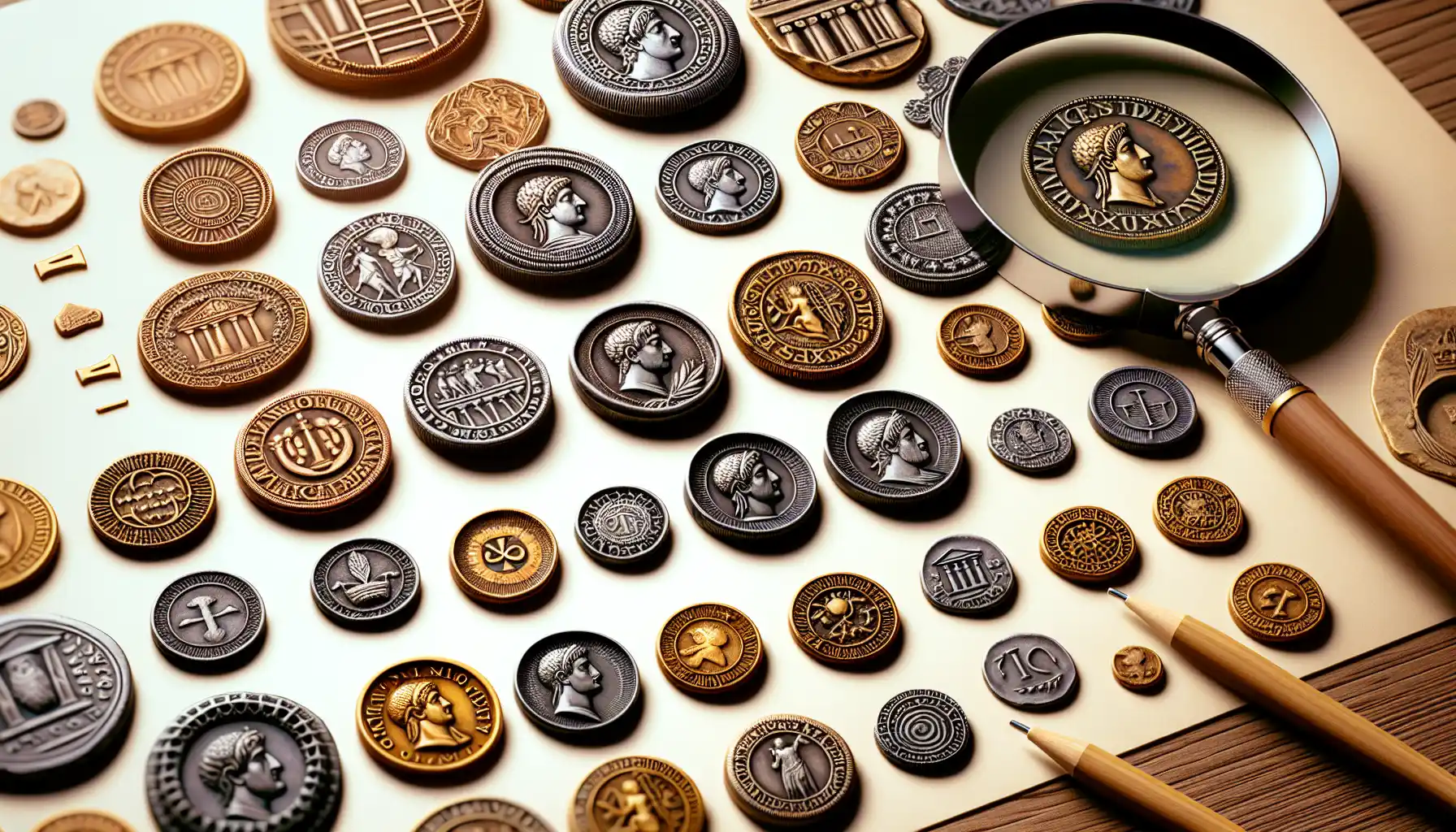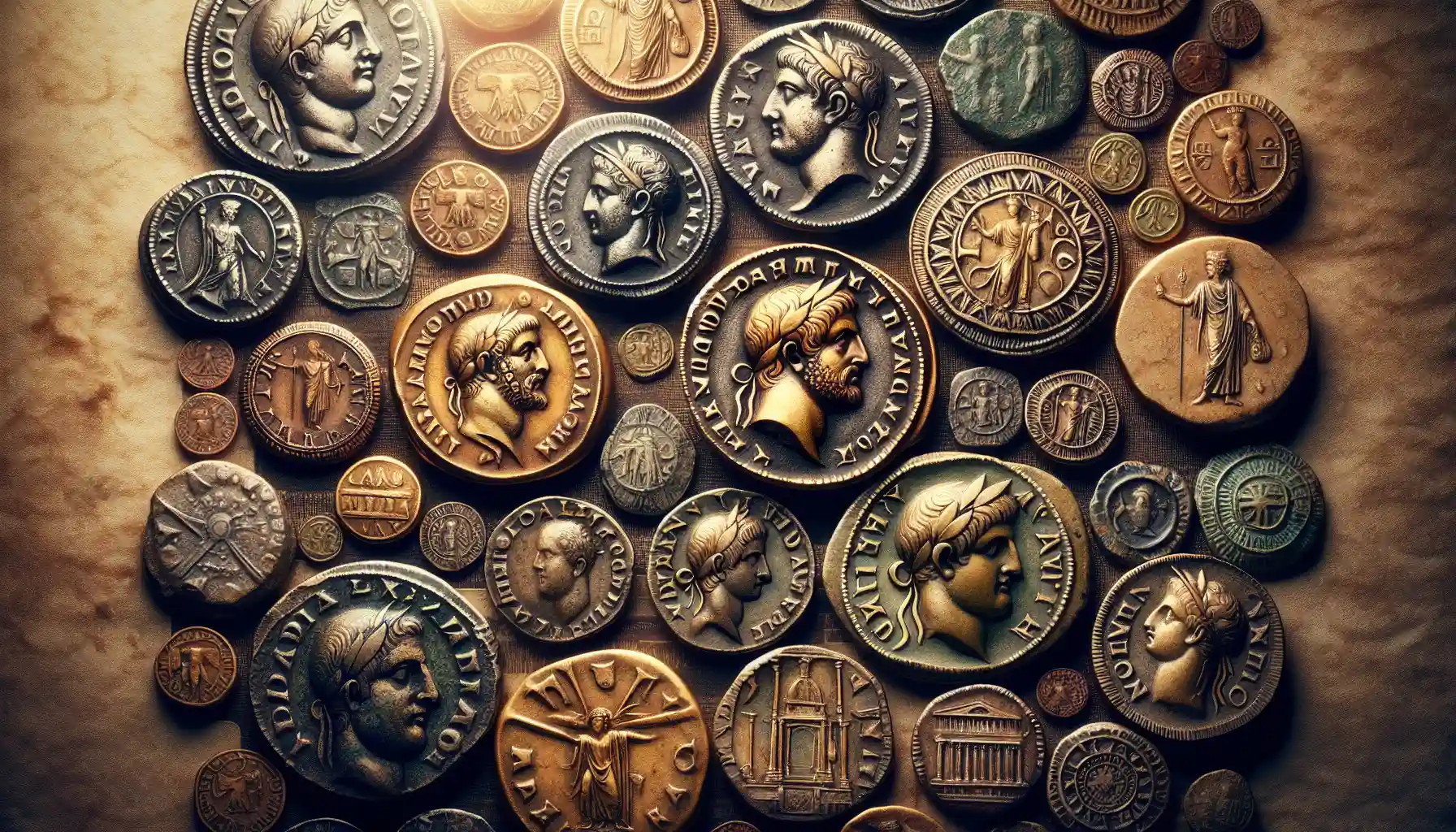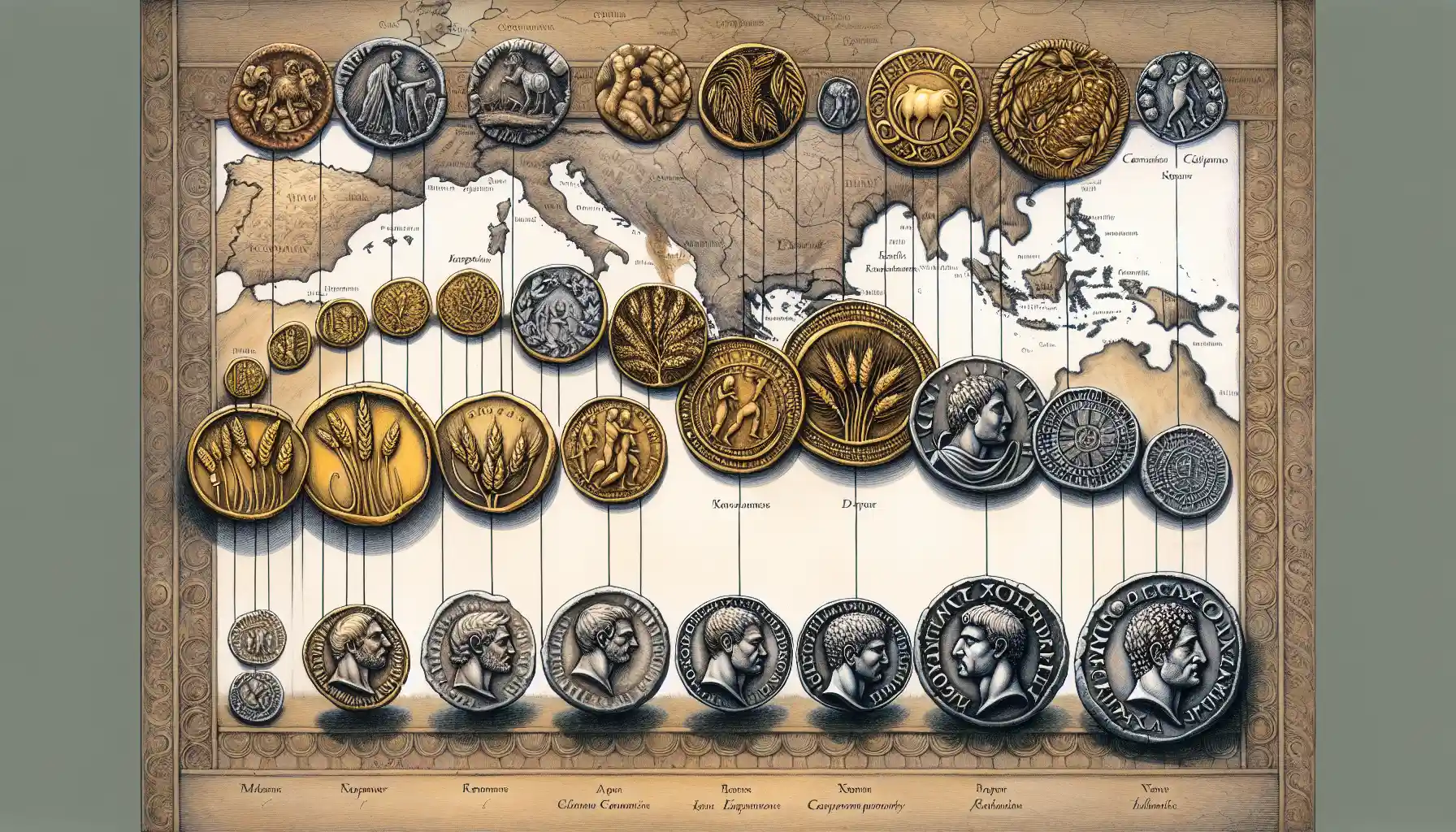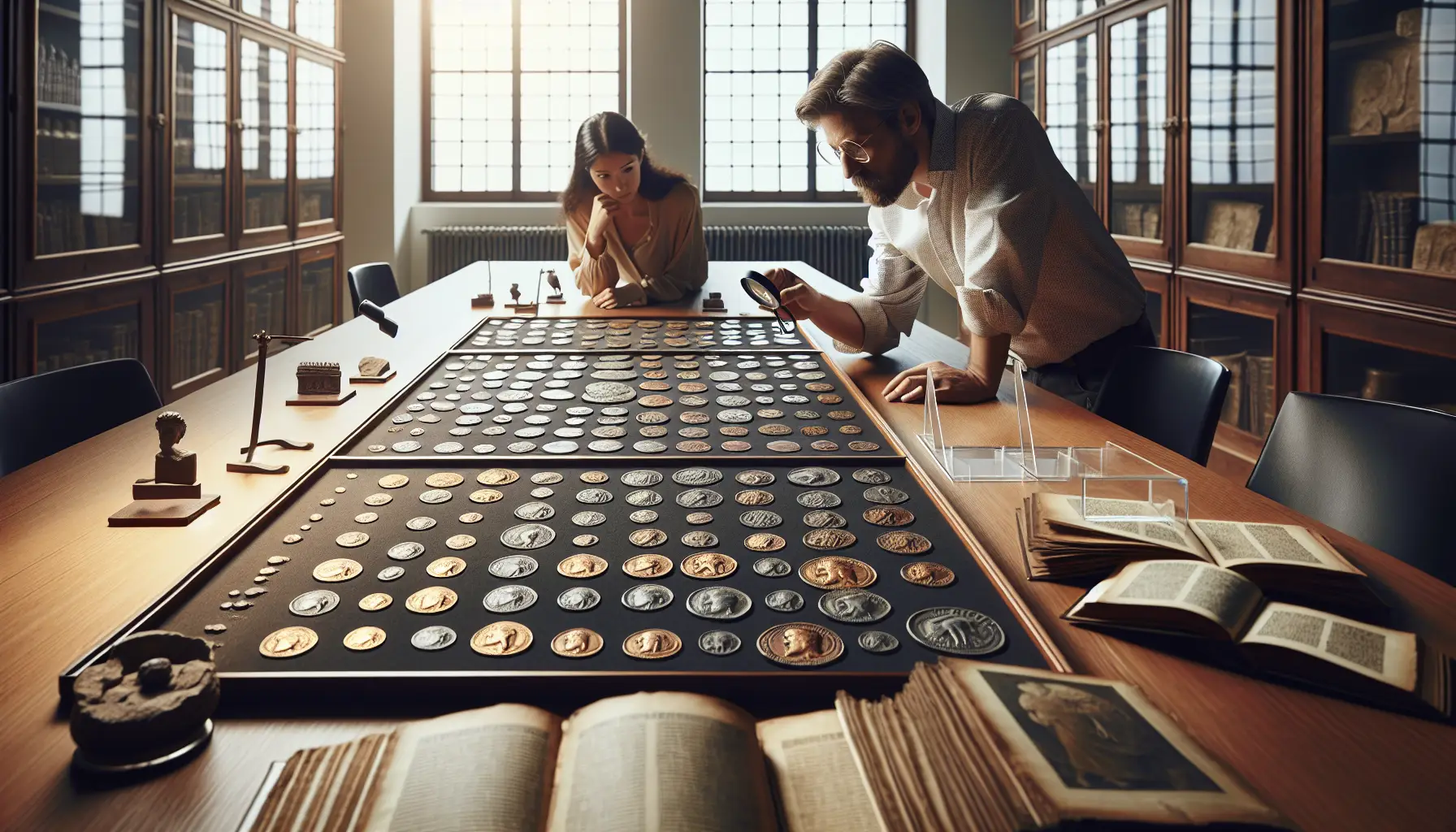Exploring Roman Coins: A Historical Journey Through Time
The Historical Significance of Roman Coins
The Stories Engraved in Roman Coins
Imagine holding a small, ancient coin in your hand. It’s not just metal—it’s a whisper from history, a tangible link to the people who walked the streets of Rome centuries ago. Roman coins were more than currency; they were messengers, spreading the word of emperors, victories, and divine blessings across the empire.
What makes them so fascinating? Well, each coin is like a miniature work of art, often featuring intricately detailed portraits of emperors. Take the image of
Julius Caesar, for instance—etched with such precision that you can almost see the ambition in his gaze. Flip it over, and you'll find symbols of power: an eagle, a laurel wreath, or perhaps a she-wolf nursing Romulus and Remus, telling Rome's mythic origin story.
- Political propaganda: Coins proclaimed new rulers and celebrated conquests.
- Cultural snapshots: They showcased gods, architecture, and daily life.
- Economic markers: The metals used—gold, silver, bronze—reflected the empire’s wealth.
It’s incredible how something so small could carry such weight—both literally and metaphorically. Roman coins weren’t just money; they were history, art, and politics, all rolled into one.
Key Features and Designs of Roman Coins

The Stories Etched in Metal
Imagine holding a small piece of history, cool and weighty in your palm—a Roman coin. These weren’t just currency; they were storytellers, whispering tales of emperors, victories, and gods. Each design was a deliberate choice, meant to inspire awe or loyalty.
Take, for example, the image of
Julius Caesar, one of the first living individuals to grace a coin. This bold move screamed power, almost like signing your name on the moon. And then there’s the goddess
Victoria, her delicate wings spreading across the metal, reminding citizens of Rome’s might on the battlefield.
- Portraits of Emperors: Often stoic, sometimes adorned with laurel wreaths, these faces were propaganda in miniature.
- Symbols of Triumph: Think eagles, chariots, or even mythical creatures like griffins.
- Inscriptions: Latin phrases that boasted titles or achievements, such as "Pater Patriae" (Father of the Fatherland).
Every scratch and detail holds meaning, transforming each coin into a tiny, portable work of art. They weren’t just used—they were admired, passed down, even hoarded.
Notable Types and Denominations of Roman Coins

The Sparkling World of Roman Gold: Aureus Coins
Imagine holding a piece of history that once shimmered in the palm of an emperor. The
Aureus, crafted from pure gold, wasn’t just currency—it was power, prestige, and propaganda all rolled into one. These coins often bore the faces of emperors like
Julius Caesar or
Augustus, their expressions almost whispering stories of conquest and ambition. Flip them over, and you might find mythological gods or triumphal symbols, each design carefully chosen to showcase Rome’s glory.
The weight? Perfectly standardized—roughly 8 grams of dazzling gold. But don’t be fooled by its beauty alone; this coin had real clout. It could fund armies, secure alliances, or dazzle visiting dignitaries. And for the everyday Roman citizen? Well, they probably never even touched one. The
Aureus belonged to the elite, an emblem of luxury in a world where most dealt in bronze or silver.
It’s incredible to think these tiny discs once held the fate of empires in their gleam. Wouldn’t you love to feel its cool, heavy weight in your hand, just for a moment?
How Roman Coins Reflect Society and Economy

The Stories Hidden in Roman Coins
Imagine holding a piece of history in your hand—an ancient Roman coin, its surface worn but still whispering tales of a bygone era. These coins were more than just currency; they were miniature billboards, propaganda tools, and snapshots of daily life. Each design was carefully chosen to convey power, loyalty, or even hope to the people who used them.
Take, for instance, the coins minted during the reign of Emperor Augustus. Some bore the image of his face, youthful and serene, surrounded by symbols of peace like olive branches. Others showcased military victories with eagles and laurel wreaths, reminding citizens of Rome’s might.
And it wasn't all about emperors. You’d find coins celebrating public works like aqueducts, or even honoring gods and goddesses. These designs weren’t random—they reflected what mattered most at the time. It’s fascinating to think that something as small as a coin could carry so much weight, both literally and metaphorically.
- Denarii: The silver standard, often depicting emperors.
- Sestertii: Larger bronze coins showcasing grand achievements.
Every coin is a time capsule, a treasure chest of Roman values, ambitions, and everyday struggles.
Collecting and Preserving Roman Coins Today

Why Collecting Roman Coins Feels Like Holding History
Imagine cradling a small, weathered coin in your hand. It’s not just metal—it’s a story, a whisper from the past. That coin might have passed through the bustling marketplaces of ancient Rome, traded for spices, wine, or silk. Or perhaps it jingled in the pocket of a soldier marching under the banner of Julius Caesar. This isn’t just collecting; it’s time travel.
For modern enthusiasts, Roman coins are treasures that connect us to a world long gone but never forgotten. And there’s something for everyone! Whether you’re drawn to the intricate portraits of emperors like
Augustus or the mythological scenes of gods and goddesses, these coins offer a window into the art, politics, and daily life of an empire.
- Denarii: The silver coins often featuring detailed emperor profiles.
- Sestertii: Larger bronze coins with incredible historical imagery.
- Aurei: Gold pieces that once symbolized wealth and power.
Each coin carries its own mysteries—tiny clues etched in Latin inscriptions or hidden in worn edges. What will your next discovery reveal?





